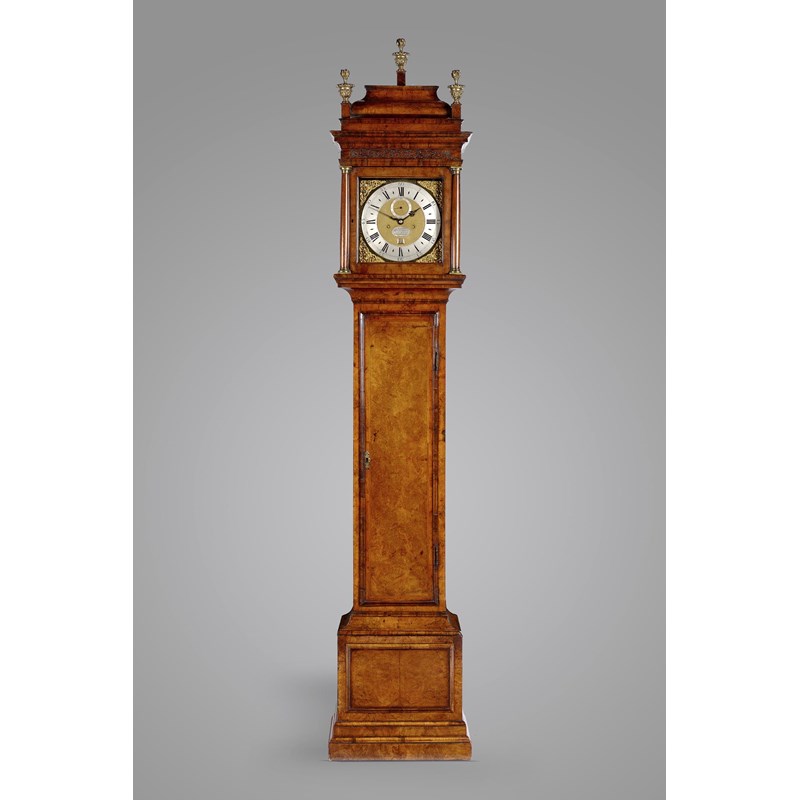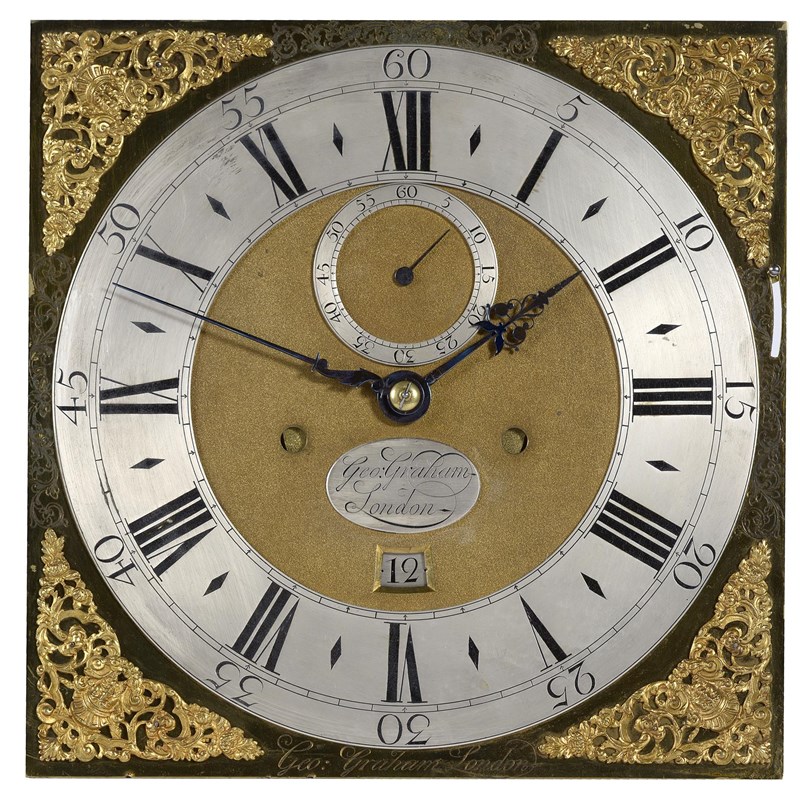Furniture, Works of Art and Clocks - 10 Jan 2018
George Graham No. 670. A fine walnut longcase clock
George Graham No. 670. A fine walnut longcase clock, the brass eight day movement with five turned, knopped and latched pillars, recoil anchor escapement and bolt and shutter maintaining power, with rack striking on a bell, punch numbered '670' to the lower edge of the backplate, the 12in latched dial with double screwed mask and leaf scroll gilt spandrels, with a silvered chapter ring with Roman numerals, the matted centre with subsidiary seconds dial and date aperture, with shuttered winding holes, signed 'Geo: Graham London' twice, on an applied plaque and along the lower edge of the dial, the associated case possibly produced by Daniel Delander's workshop, with a shaped caddy top with three gilt brass urn finials, above a fret carved panel and turned pilasters with brass caps, the burr veneered trunk door with feather banding, the plinth base with outline mouldings, George II but movement and case associated, 256cm high.
George Graham, (1673-1751), a pre-eminent clockmaker and Fellow of the Royal Society. Apprenticed in July 1688 to Henry Aske he was free in 1695 and immediately transferred to Tompion's workshops. In 1704 he married Tompion's niece Elizabeth. He took the business over on Tompion's death in 1713 and moved to the Dial and One Crown in 1720. Graham is credited with several inventions including the deadbeat escapement in 1713, the mercury pendulum and cylinder escapement in 1726.
Provenance: This clock was lent by the previous owner to the Fitzwilliam Museum in Cambridge and was on display for many years alongside a Tompion.





 Live online bidding is available via our own
Live online bidding is available via our own